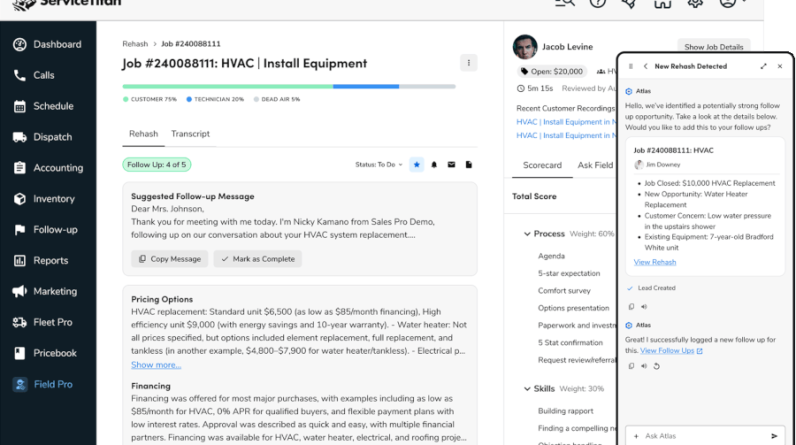It finally has begun: On Jan. 4, Google disabled third-party cookies for 1% of Chrome, or approximately 30 million users. The move represents the first tangible step in the search giant’s plan to phase out the tracking technology for all users in the second half of the year — a change that will eliminate a long-standing digital advertising tool.
With the announcement nearly four years ago that it would eventually kill the third-party cookie, Google set into motion a race for the advertising industry to build, test and adopt alternative targeting and tracking methods, whether using its Privacy Sandbox proposals or those crafted by other players.
But while a panoply of alternative IDs, identity graphs and data clean room solutions have cropped up in recent years, the missing piece in solving the post-cookie problem could be an application of generative artificial intelligence (AI), the buzzy technology that has captivated the worlds of advertising, technology and general culture for more than a year.
“To remedy the rift of third-party cookie depreciation, it’s crucial for marketers to lean into AI to supercharge strategies utilizing zero- and first-party consumer data,” said Anjali Yakkundi, vice president of product marketing at Movable Ink, in emailed comments.
“AI can analyze consumers’ digital behavior like browsing history, purchasing patterns and engagement to provide deeper audience understanding while creating tailored experiences,” the executive added. “Moreover, brands can expand AI and ML within predictive models that garner insights into consumers’ likely next steps, allowing for proactive and strategic development of outputs that meet the consumer where they are before they even know they’re going to be there.”
The power of AI
Much of advertising’s focus on generative AI to date has centered on the ability to create text and image assets that can be produced quickly and help marketers meet longtime goals around personalization-at-scale. But the ability of AI to sift through and analyze data with incredible speed and accuracy could help marketers make up for the signal loss created by cookie deprecation.
“2024 is going to be the true rise and scaling of additional intent signals,” said Lynda Clarizio, a media industry veteran and co-founder of early stage venture capital firm The 98. “For a long time, we’ve had web-tracking intent and social intent. Now we’re going to have the rise of transaction intent and contextual intent.”
Generative AI needs three things to work, according to experts: proprietary first-party data, the infrastructure to process that data and data scientists to develop the data to train new models. As applied to advertising, those requirements will put tech players like Google and Amazon in the “driver’s seat,” Clarizio said.
“We’re really ‘Back to the Future,’” Clarizio explained, connecting the rise of digital walled gardens to the previous walled gardens in TV advertising.
“Now we’re going back in the other direction, and some of that has been because of deprecation of cookies and the inability to use data signals in a broader way,” Clarizio added. “You’re really restricted to first-party data, which makes sense from a privacy perspective but reinforces the strength of some of these larger players.”
However, other players are beginning to leverage generative AI, using the tech for search re-ranking in a fast, effective way and to deliver a more robust, personal experience to users. Other use cases of the technology are still being developed.
“AI will become more prevalent as agencies and talent find practical applications to reduce costs and speed up processes,” said Rob Davis, CMO and president of independent agency Novus, in emailed comments. “This will expand beyond media optimization and data compilation — for example, applying generative AI to simulated focus groups for cost-effective insight generation.”
The race for data and identifiers continues
The death of the cookie will be a major test of efforts to acquire marketing first-party data, as well as zero- and second-party data, in a privacy-safe way. A continued push for data could encourage brands, agencies and publishers to establish more data co-ops that allow entities to share data that can then be used to fuel generative AI efforts.
“I’ve been looking for a long time for the rise of data co-ops that really take first-party data from different web properties and combine that together to rival something that Google does,” Clarizio said. “Maybe you’ll see more of that in 2024 because generative AI will enhance the ability to create that. It’s like identity graphs on steroids.”
Along with solving for marketing first-party data, the industry in 2024 will also have to contend with a still-fragmented landscape of alternative ID providers, including The Trade Desk’s Unified ID 2.0, LiveRamp’s RampID and dozens more, that are jockeying for market share and offering different use cases.
“If you’re a buyer, it’s just mass confusion,” said Eli Heath, head of identity at Lotame, which offers the Panorama ID. “Part of this has resulted in paralysis, because it’s like, ‘What do I use? Is there going to be a winner-takes-all?’”
Marketers should not expect one ID to rule them all. Instead, they will likely have to coordinate behavior-based addressability and contextual strategy in a variety of ways, Heath said.
“It’s really going to be a basket approach, not only within the cookieless identifier spaces, but also in the general strategies and tactics that you deploy within programmatic,” the executive added. “I really think it’s going to be all over the place.”
Pushing back on Google
Along with ad-tech and agency-based solutions for data and identifiers, marketers in 2024 will still have to grapple with the elephant in the room, Google. If the company’s latest timeline holds, there is still much work to be done before the second half of the year, and still more questions than answers around verification, measurement and attribution, according to Paul Bell, president of ad-tech firm 33Across.
“Once the buy-side sees results that can be measured by marketers and/or a trusted third party (i.e. not just Google), Google and the market can confidently move beyond 1%,” Bell said in emailed comments. “To make this transition smooth, Google needs to ensure partners that they can tie their marketing dollars back to a trusted conversion metric. Based on the amount of advertising dollars and the number of partners they need to put at ease, this timeline feels aggressive.”
To assuage concerns about a cookieless future, Google has continued to develop its Privacy Sandbox proposals. Throughout the process, many groups have pushed back on Google’s claims about the effectiveness of its new offerings. Early tests still demonstrate “real challenges,” per the IAB Tech Lab.
In kind, Google has pushed back against a range of objections to Privacy Sandbox around sufficiency and complexity via a blog post that suggests the company is committed to its timeline and plan.
“We believe the current Privacy Sandbox APIs — generally available in Chrome since September — are ready to carry the ecosystem into a more private future. And we’re committed to pushing privacy-preserving technologies forward for years to come, both in terms of privacy and utility,” wrote Victor Wong, senior director of product management for the Privacy Sandbox.
“There is a wave of action that’s beginning to happen, and I think reality is going to start slapping the industry in the face.”

Matt Hertig
CEO, ChannelMix
Still, advertisers should not put all their eggs in the Privacy Sandbox and look to Google — still a dominant player in the market — to be a “savior of the advertising world,” said Mathieu Roche, CEO and co-founder of ID5, in emailed comments.
“It’s important to remember throughout all of this that there are a number of alternatives including universal IDs, Identity Graphs and Data Clean Rooms that have proven to be effective in cookie-free browsers like Safari and Firefox,” Roche said. “Advertisers only have a few months left to ensure they can effectively engage with their audiences and measure results in the long term.”
The best-prepared marketers will not wait any longer to get their cookieless plans in motion. Plus, the second half of 2024 deadline is still vague and could happen sooner rather than later: Lotame’s Heath predicts that more of the landscape could be cookieless at some point in Q3 to not disrupt the critical Q4 ad-buying period.
Advertisers wake up
A recent survey conducted for the PrimeAudience ad network found that 88% of U.S. marketers feel confident about cookie deprecation, with more than half already testing the cookieless future. Still, almost a third don’t know how to use Google’s Protected Audience API (formerly known as FLEDGE), even though 68% plan to use the Privacy Sandbox proposal in 2024. Beyond Google, more than half (53%) of marketers are looking to AI as part of their solutions.
“While it is promising to see U.S. marketers feel confident about their preparation for the cookieless world, there is a desire to continue to put effective solutions in place,” said Mateusz Rumiński, PrimeAudience vice president of product, in a statement. “We believe that new advertising technologies in combination with generative AI and optimal use of first-party data can lead to a thriving advertising ecosystem.”
In line with PrimeAudience’s survey, some observers have seen large parts of the ad industry finally wake up to the reality of what the death of the cookie means to advertising, a shift that will only continue as the clock ticks down.
“There is a wave of action that’s beginning to happen, and I think reality is going to start slapping the industry in the face,” said Matt Hertig, CEO of analytics company ChannelMix. “This is probably one of the most monumental shifts in how we understand marketing’s impact in the past 15 years… and that’s the real excitement that AI can inject back into the marketing analytics space.”






